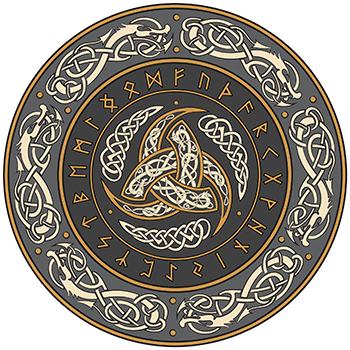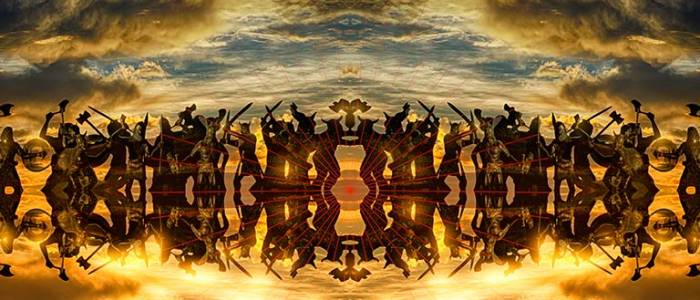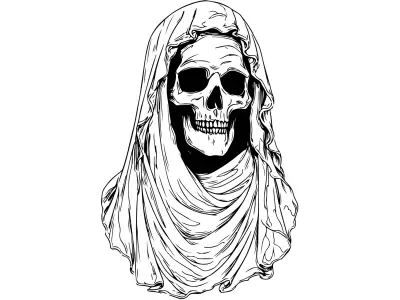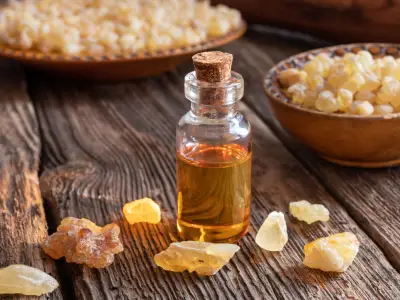The Norse pantheon is filled with fascinating figures, each with their own distinct roles and abilities. This guide explores the legendary Viking gods, offering an overview of their powers, relationships, and the myths that surround them.
If you're looking for Norse god names, you've come to the right place. From well-known figures like Odin and Thor to lesser-known gods and goddesses, their stories paint a vivid picture of the ancient Nordic worldview.
Table of Contents
- The History of the Norse Gods
- The Norse Gods & Goddesses
- Odin
- Borr
- Frigg
- Balder
- Bragi
- Hermod
- Loki
- Hod
- Thor
- Freya
- Freyr
- Tyr
- Heimdall
- Hel
- Njord
- Vidar
- Vale
- Forseti
- Mimir
- Ullr
- Iðunn
- Norse Gods & Goddesses FAQs
- How Many Norse Gods Are There?
- What Was the Dwelling Place of the Principal Norse Gods?
- Who Were the Most Powerful Norse Gods?
- Do People Still Believe In Norse Gods?
The History of the Norse Gods
Before the beginning of time, there was Ginnungagap - a bottomless abyss, which separated the icy land of Niflheim and the fiery land of Muspelheim. These two realms rose in power and clashed; the burning frost turned into water drops and the water drops turned into life.
The first living being was Ymir, a hermaphroditic giant who was created from those life-giving drops of water and whose death was brought about by Odin and his brothers. Odin, Vili, and Vé, Ymir’s descendants, fashioned the Nordic mythological universe from his blood, bones, flesh, teeth, hair, eyelashes, brains and skull.
The Norse gods and goddesses belong to two major clans: Æsir and Vanir. Odin, Frigg, Thor, Loki, Balder, Hod, Heimdall and Tyr are the most elevated representatives of Æsir and are known as the main gods. The second clan, Vanir, contains the fertility gods and count Njord, Freyr, and Freyja as their most notable members. Despite the antagonism between them, it was necessary for the two families to combine their powers and ideals for all to prosper.

The Norse Gods & Goddesses
The Norse pantheon encompasses a range of gods and goddesses, each with unique roles and powers. This section explores the group of main Norse gods, delving into their stories and uncovering the incredible feats that made them legendary. From Odin, the Allfather, to Frigg, the revered Viking goddess of love and fate, you’ll discover the names of Norse gods and their powers that continue to captivate us today.
Wondering how many Norse gods there are? While their exact number is debated, this guide highlights key figures whose tales have endured for centuries.
Odin
The supreme deity of Norse mythology and the greatest among the Norse gods was Odin. He was the son of the god Borr and the Jötunn Bestla, and was considered to be the Allfather of the Æsir. Odin was the awe-inspiring ruler of Asgard, and the most revered immortal, who was on an unrelenting quest for knowledge with his two ravens, two wolves and the Valkyries. He was the god of war and, being delightfully paradoxical, also the god of poetry and magic. He was famous for sacrificing one of his eyes in order to be able to see the cosmos more clearly, and his thirst for wisdom saw him hang from the World Tree, Yggdrasil, for nine days and nine nights until he was blessed with the knowledge of the runic alphabet. His unyielding nature granted him the opportunity to unlock numerous mysteries of the universe. Odin was often depicted riding upon Sleipnir, a great flying horse with eight legs, and wielded the spear Gungnir, which was said to never miss its mark. He was thought to have had at least five sons with four different partners. It’s thanks to him that we have our word for “Wednesday” (literally “Woden’s day”).
Borr
Father of Odin, Vili and Vé, whose origins within Norse mythology remain shrouded in mystery: his mother was never revealed. Borr is sometimes taken to signify the earth, or the very first mountain.
Frigg
Odin’s wife, Frigg, was a paragon of beauty, love, fertility and fate. She was the mighty queen of Asgard, a venerable Norse goddess of the sky, who was gifted with the power of divination, and yet was surrounded by an air of secrecy. She was the only goddess allowed to sit next to her husband, and remained loyal to him despite his numerous extra-marital affairs. Frigg was a very protective mother, so she secured an oath from the elements, beasts, weapons and poisons to ensure that they would not injure her brilliant and loving son, Balder. Her trust was betrayed by Loki, a most deceitful god. Frigg’s name is directly responsible for our rendering of the word for “Friday”.
Want to put your knowledge of the Norse pantheon to the test?
Centre of Excellence has you covered.
Sample the first 2 modules of our Norse Mythology Diploma Course for FREE!
Balder
Frigg and Odin were the parents of Balder, who was described as living between heaven and earth. Balder was the epitome of radiance, beauty, kindness and fairness, and was the god of light and purity. He was believed to be immortal, but had a nightmare that foretold his death. He was ultimately killed with mistletoe - the golden bough that was overlooked by Frigg when she sought to secure oaths that no entity would harm her son, and therefore contained both his life and his death.
Bragi
The eloquent bard of Valhalla, Bragi is sometimes thought to be one of Odin's sons, although this isn't a universally-endorsed claim. His name comes from the word "bragr", which means "poetry", and historical records exist of many viking or Norse poets that shared his name. Bragi's tongue had runes carved upon it to represent his mastery over spoken word.
Hermod
Another disputed son of Odin, Hermod was fastest of all the gods and goddesses in Asgard, and was therefore their chosen messenger. In this way, he sits as the counterpart to the Grecian figure, Hermes, and Mercury of the Romans. It was Hermod who rode Sleipnir to plead that the goddess Hel should release Balder after his death. Hel agreed, on the condition that the whole of creation wept for Balder’s loss. Sadly, a single Jötunn - usually thought to represent the disguised trickster god, Loki - refused to do so. Just as it was only mistletoe that failed to vow against causing Balder harm, so his fate was sealed by a sole refusal to shed tears.
Loki
Loki was a mischievous god who could shape-shift and take up animalistic forms. He conceived a scheme to cause the death of Balder. Upon learning that mistletoe was the only thing that could hurt Balder, he placed a branch into the hands of the blind god, Hod, and tricked him into throwing it at Balder, killing him. Unlike his modern day incarnation in the Marvel Universe, Loki wasn’t actually the son of Odin and half-brother of Thor, but was instead seen as a “blood brother” to Odin. Known as the Father of Monsters, Loki sired not only the terrifying great wolf, Fenrir, but also the serpent Jörmungandr, and Odin’s horse, Sleipnir.
Hod
Ill-fated twin brother of Balder, and the god of darkness. Both Hod and Balder await Odin’s death at Ragnarok, as it’s said that they will rule in his stead when the realm of the dead opens and the world is regenerated.
Thor
Thor was Odin’s most widely-known son and the husband of the goddess Sif. Thanks to the Marvel Universe, he is still perhaps the most well-known god in the Norse pantheon. He was the protector of humanity and the powerful god of thunder, who wielded a dwarf-forged hammer named Mjöllnir: a devastating weapon that could slay giants and break mountains alike. Among the Norse gods, he was known for his bravery, strength, healing powers and righteousness. Thor was often depicted riding a chariot that was drawn by two immense goats named Tanngnjostr and Tanngrisnir. The word “Thursday” is taken directly from the old Norse meaning “Thor’s Day”.
Freya
Freya was one of the most sensual and passionate goddesses in Norse mythology. She was associated with many of the same qualities as Frigg: love, fertility and beauty, although she also practised Seidr, a form of magic that was associated with control, manipulation, fate and destiny. She was the sister of Freyr and was a member of the Vanir, ruling over a meadow in heaven named Fólkvangr. It was thought that half of those heroes who died in battle would go on to reside in Fólkvangr, whereas the other half would be guided by the Valkyries to Valhalla. Freya was often shown wearing a necklace named Brisingamen and a cloak of feathers. and her animal companions included the two cats who drew her chariot, and a boar named Hildisvini.
Freyr
Freyr was the god of fertility and one of the most respected gods of the Vanir clan. Freyr was a symbol of prosperity and pleasant weather conditions. He was frequently portrayed with a large phallus.

Tyr
The original God of war, and the bravest of all the gods. So brave was Tyr, that he placed his hand into the mouth of the great wolf, Fenrir, to ensure that the other gods had the distraction they needed to chain the beast to a rock. This selfless act resulted in the loss of Tyr’s hand. His name is the direct inspiration for our word for “Tuesday”.
Heimdall
Heimdall, known as the ‘shiniest’ of all gods due to him having the ‘whitest skin’, was a son of Odin. He sat atop the Bifrost (the rainbow bridge that connects Asgard, the world of the Æsir tribe of gods, with Midgard, the world of humanity) and remained forever on alert, guarding Asgard against attack. Heimdall’s horn, the Gjallarhorn, was blown to warn the other gods and goddesses of impending danger.
Hel
Hel was the goddess and ruler of the Norse underworld of the same name (also known as Helheim). The daughter of Loki, she had pale skin and appeared to be death-like, with only half of her body being flesh and blood, and the other half consisting of bones. She nurtured and housed any who entered her realm, within which her power had no equal.
Njord
At the end of the Æsir-Vanir war, Njord was sent to Asgard to secure a truce. A member of the Vanir, he was the god of the wind, seafarers, coasts, inland waters and wealth. Father of Freyja and Freyr (born to his sister, Nerthus), he lived in a house on the seashore in Asgard (named Noatun).
Vidar
Vidar was another son of the supreme god, Odin, and Grid (a giantess), and his powers were matched only by that of Thor. Vidar resided in a great hall within Asgard named Vidi and, despite his great strength, preferred to sit in silent contemplation or spend his time working upon a special shoe. This shoe is fashioned from the wares of many different shoemakers across Midgard, and would allow Vidar to avenge Odin’s death after Ragnarok. In fact, it was Vidar who would kill Fenrir, and survive Ragnarok to create the new world.
Vale
Vale (pronounced rather like the word “valley”) was the son of Odin who avenged Balder’s death by killing Hod, the god who pierced Balder with mistletoe. An archer, Vale’s arrows echoed the sunbeams that grow in strength as winter turns into spring. He was another survivor of Ragnarok.
Forseti
Presiding over disputes between the gods and goddess of Asgard, Forseti was a peaceful master of meditation who was associated with justice, truth and law. His name means "president" or "presiding one". The son of Balder, Forseti's silver and gold house, Glitnir, shone so brightly that it could be seen from far afield.
Mimir
A wise Æsir god, Mimir was sent to the Vanir to secure a truce between the two groups, yet was killed by the gods he sought to forge peace with. After his demise, his head was kept by Odin, who continued to receive secret knowledge and wise counsel from it.
Ullr
Ullr is a norse god of archery and the hunt who carries particular relevance to modern audiences. As the god of winter, Ullr was often depicted standing upon his shield in the manner of a snowboarder, which has led to a contemporary association with skiing. Ullr was the son of Sif and the stepson of the mighty Thor.
Iðunn
The goddess of youth, spring and rejuvenation, Iðunn distributed fruit - usually taking the form of golden apples - to the other gods that prolonged their longevity. Iðunn was once lured out of Asgard by Loki - after he promised her apples even fairer than those she already tended - where she was abducted by a great eagle. During her absence, the other gods begin to grow old, eventually leading Loki to relent from his mischief. Transforming Iðunn into a nut, Loki assumed the form of a falcon and carried the precious goddess back to Asgard, eluding the pursuing eagle.
Norse Gods & Goddesses FAQs
How Many Norse Gods Are There?
It’s almost impossible to put an exact number on the individuals in the pantheon of Norse gods and goddesses. Some sources claim that the Norse worshipped as many as 66 gods and goddesses, although others claim that only around 12 of that number could be classed as “main” deities. And, of course, such figures say nothing of the innumerable giants (known as “jötnar”), trolls, dwarves, draugrs and other creatures that inhabit the world of Norse mythology. The 12th century Icelandic poet and historian Snorri Sturluson lists 12 Æsir gods and 12 Asynjur goddesses in his Prose Edda (a major source of Norse mythology), although he later changed these numbers to 14 Æsir gods and up to 28 Asynjur goddesses!
What Was the Dwelling Place of the Principal Norse Gods?
The dwelling place of the principal Norse gods and goddesses was Asgard, a legendary place that was reachable only via the Bifrost, and that was actually divided into 12 separate realms. These realms included Valhalla, the home of both Odin and the great heroes of Midgard who died in earthly combat; Thrudheim, the dwelling of Thor; Breidablik, the home of the tragic god Balder, and many more besides. Each of the most important Norse gods possessed their own palace on Asgard, and many Germanic people believed that their own important buildings were directly similar in design to these mighty structures.
Who Were the Most Powerful Norse Gods?
Odin was the king of the Æsir, and father to Thor, one of the most powerful gods in Norse mythology. The wisest of the gods, Odin’s deeds included the defeat of the giant Ymir: the first living being and the source of the Earth itself. However, other supremely powerful Norse gods and goddesses included Balder, whose impervious nature led him to numerous victories before his untimely demise; Loki, whose tricks and influence led to the downfall of many of his fellow deities; Hel, the goddess and ruler of the underworld whose power could eclipse that of Odin; Tyr, the original god of war who remained victorious even after losing an arm in battle with Fenrir; Heimdall, the all-seeing god who was responsible for fending off any major threats to Asgard; Vidar and Vale, the half-brothers of Thor who won huge acclaim in Ragnarok; and Elli, the goddess of old age who was able to best even Thor in a wrestling match.
Do People Still Believe In Norse Gods?
Yes! After being revived in the 20th century, interest in Norse paganism like Asatru, Odinism and Heathenism has actually grown in the 21st century, and many of these belief systems share parallels with the old Norse religion. For example, both old and new religions are polytheistic, with numerous important gods and goddesses that still include names such as Odin, Thor, Freyr and Freyja, as well as tribes such as the Æsir, Vanir and Jötun. Many of the 20,000 or so followers of the new Norse religion also believe in Valhalla, although some now choose not to place much emphasis on the afterlife.
The richness of the Norse mythology and folklore continues to mesmerise people of all ages and backgrounds. Immersed in the sagas, we let our imagination go wild, as we learn of old worlds and consider new and exciting interpretations.
Want to put your knowledge of the Norse pantheon to the test?
Centre of Excellence has you covered.
Sample the first 2 modules of our Norse Mythology Diploma Course for FREE!






